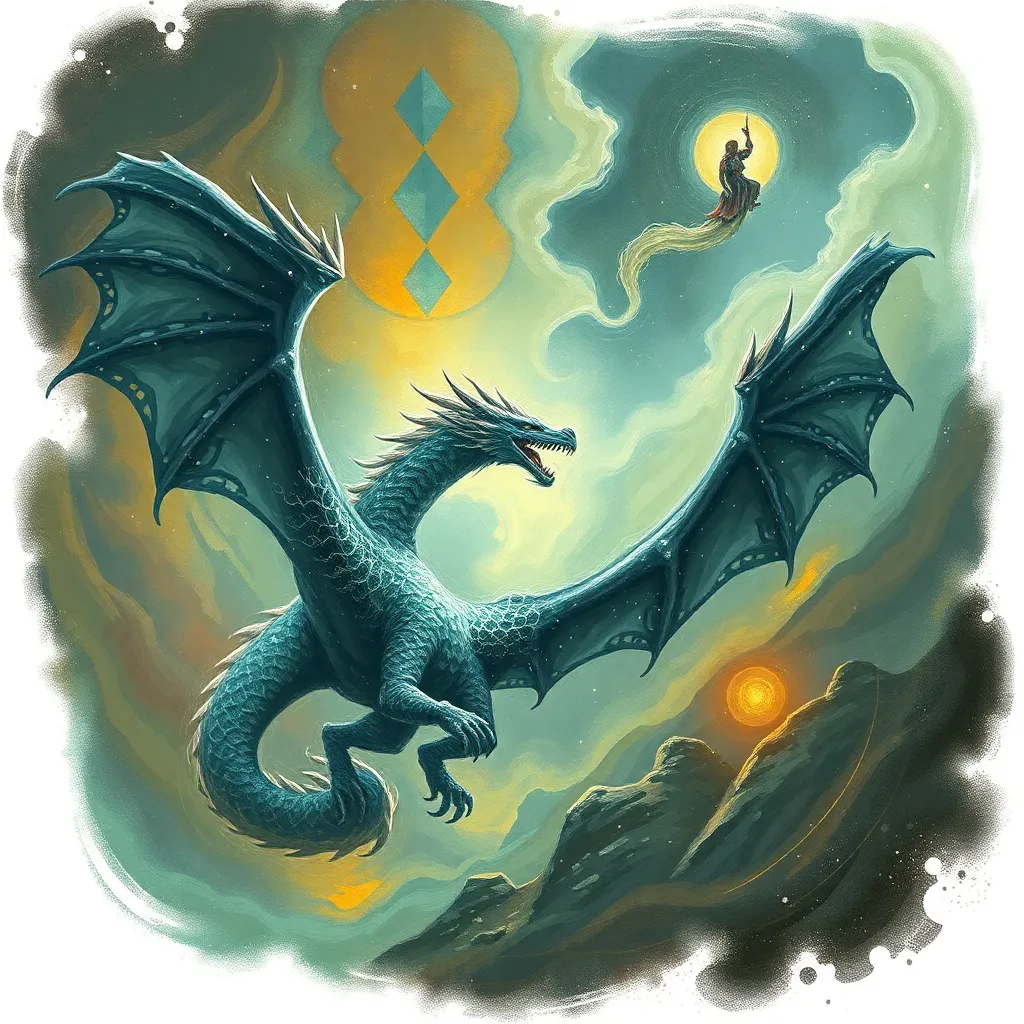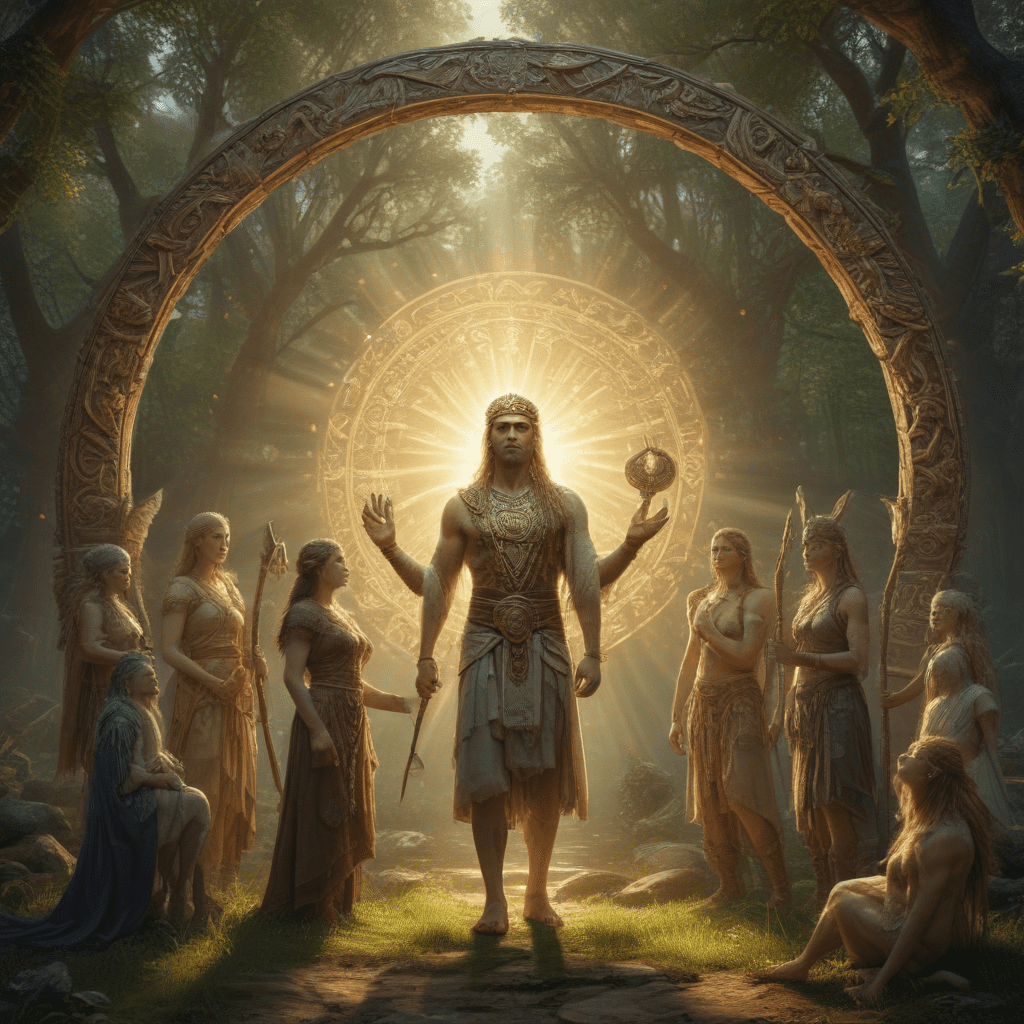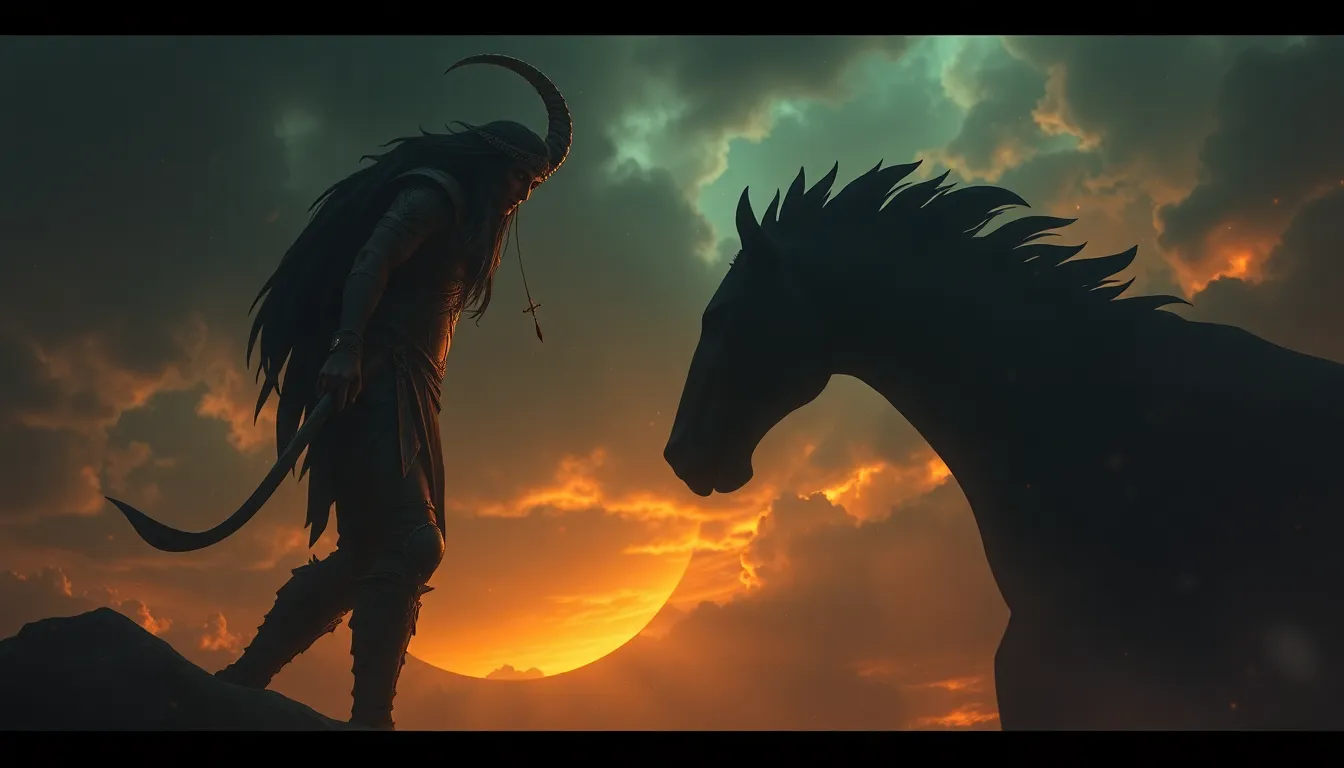The Dragon’s Flight: Exploring the Symbolic Meaning of Fafnir
I. Introduction
Fafnir, a prominent figure in Norse mythology, is often depicted as a fearsome dragon. His story is a complex tapestry woven with themes of greed, transformation, and the consequences of avarice. Dragons, in various mythological narratives, serve as both formidable adversaries and symbols of deep-seated fears. This article aims to explore the symbolic meanings associated with Fafnir, delving into his origins, the broader symbolism of dragons, and the lessons his tale imparts.
II. Fafnir’s Mythological Background
Fafnir’s origin is rooted in the legends of the dwarves. Originally a dwarf, he was transformed into a dragon due to his overwhelming greed for gold and power.
A. Origin story: From dwarf to dragon
Fafnir was one of the three sons of the dwarf king Hreidmar. After the death of their father, Fafnir and his brothers, Regin and Otter, came into possession of a vast treasure, including the cursed Ring of Power, known as Andvaranaut. Driven by insatiable greed, Fafnir murdered his father to claim the treasure for himself.
B. The tale of greed and transformation
Consuming the gold and the power it promised, Fafnir underwent a grotesque transformation into a dragon. This metamorphosis symbolizes how greed can corrupt and dehumanize individuals, turning them into monsters.
C. Connection to the Ring of Power and its curse
The Ring of Power is central to Fafnir’s story. It is said to bring misfortune and death to its possessor. This curse serves as a cautionary tale about the dangers of coveting wealth without regard for its consequences.
III. The Symbolism of Dragons in Mythology
Dragons are prevalent in mythologies worldwide, often embodying a range of themes and characteristics. In many cultures, they are symbols of chaos, evil, or destruction, while in others, they are revered as wise and protective beings.
A. Common themes associated with dragons
- Power and dominance
- Greed and avarice
- Chaos and destruction
- Wisdom and guardianship
B. Dragons as representations of chaos and evil
In Norse mythology, dragons like Fafnir often represent the chaotic forces of nature and the destructive side of human ambition. They embody the darker aspects of the human psyche, serving as obstacles to be confronted.
C. Contrast with protective or wise dragons in other cultures
Conversely, in cultures such as Chinese mythology, dragons are seen as symbols of strength and good fortune, often associated with water and agriculture. This duality highlights the varying perspectives on dragons across different narratives.
IV. Fafnir as a Symbol of Greed and Destruction
Fafnir’s story is a stark representation of how greed can lead to one’s downfall. His insatiable desire for wealth ultimately transforms him into a creature of destruction.
A. The role of greed in Fafnir’s transformation
Fafnir’s transformation into a dragon is directly linked to his greed. This metamorphosis signifies how the relentless pursuit of material wealth can lead to moral decay and loss of humanity.
B. Consequences of avarice in Fafnir’s story
Fafnir’s greed results in isolation, as he becomes a solitary dragon, guarding his hoard. His fate serves as a warning about the isolating effects of greed and the destruction it brings not only to oneself but also to others.
C. Lessons on the dangers of materialism
Fafnir’s tale warns against the dangers of materialism, emphasizing that the relentless pursuit of wealth can lead to one’s downfall and alienation from loved ones.
V. Fafnir’s Role in the Hero’s Journey
In the context of the hero’s journey, Fafnir serves as a significant adversary that the hero must confront to achieve greatness.
A. The archetype of the dragon in hero myths
Dragons often symbolize the ultimate challenge in hero myths. They represent obstacles that heroes must overcome to prove their worth and attain their goals.
B. Fafnir as a formidable adversary for Siegfried
Siegfried’s encounter with Fafnir is a crucial moment in his journey. Slaying the dragon is not just a feat of bravery but also a transformative experience that signifies the hero’s growth.
C. The significance of slaying Fafnir in Siegfried’s path to heroism
By defeating Fafnir, Siegfried not only gains the treasure but also demonstrates his courage and strength, solidifying his status as a hero. This act symbolizes overcoming one’s fears and the triumph of good over evil.
VI. Psychological Interpretations of Fafnir
Fafnir’s character can also be viewed through a psychological lens, representing the internal struggles faced by individuals.
A. Fafnir as a manifestation of inner fears and desires
Fafnir embodies the darker aspects of human nature, including fear, greed, and the desire for power. His story illustrates the internal battles individuals face when grappling with their desires.
B. The dragon as a symbol of the shadow self
In Jungian psychology, dragons can symbolize the shadow self, representing the parts of our psyche that we often repress or deny. Fafnir’s transformation is a manifestation of this shadow, highlighting the importance of acknowledging and confronting one’s darker impulses.
C. Exploring the duality of destruction and transformation
Fafnir’s story encapsulates the duality of destruction and transformation. While his greed leads to his downfall, it also sets the stage for Siegfried’s heroism, illustrating how personal struggles can lead to profound change.
VII. Modern Representations of Fafnir
Fafnir’s legacy continues to resonate in contemporary literature and media, showcasing the evolution of dragon symbolism in modern storytelling.
A. Fafnir in contemporary literature and media
Fafnir’s character has appeared in various forms in modern literature, films, and video games, often reinterpreted to fit contemporary themes and narratives.
B. The evolution of dragon symbolism in modern storytelling
While traditional depictions of dragons often emphasize their menace, modern representations frequently explore their complexity, blending themes of heroism, redemption, and moral ambiguity.
C. Fafnir’s impact on popular culture and fantasy genres
Fafnir has become a significant figure in fantasy genres, influencing the portrayal of dragons and their role in hero narratives. His story serves as a rich source of inspiration for modern creators.
VIII. Conclusion
Fafnir’s tale is a multifaceted exploration of greed, transformation, and heroism. His story serves as a powerful reminder of the dangers of avarice and the importance of confronting one’s fears.
The enduring relevance of Fafnir in today’s society lies in the lessons his narrative imparts about human nature and the consequences of unchecked desires. As we navigate our own lives, Fafnir’s legacy encourages us to reflect on our values and the impact of our choices.
In conclusion, Fafnir’s journey from dwarf to dragon, and ultimately to a symbol of greed and destruction, offers profound insights into the human condition. His story invites us to embrace the complexities of our nature and to strive for growth, understanding, and heroism in our own lives.




